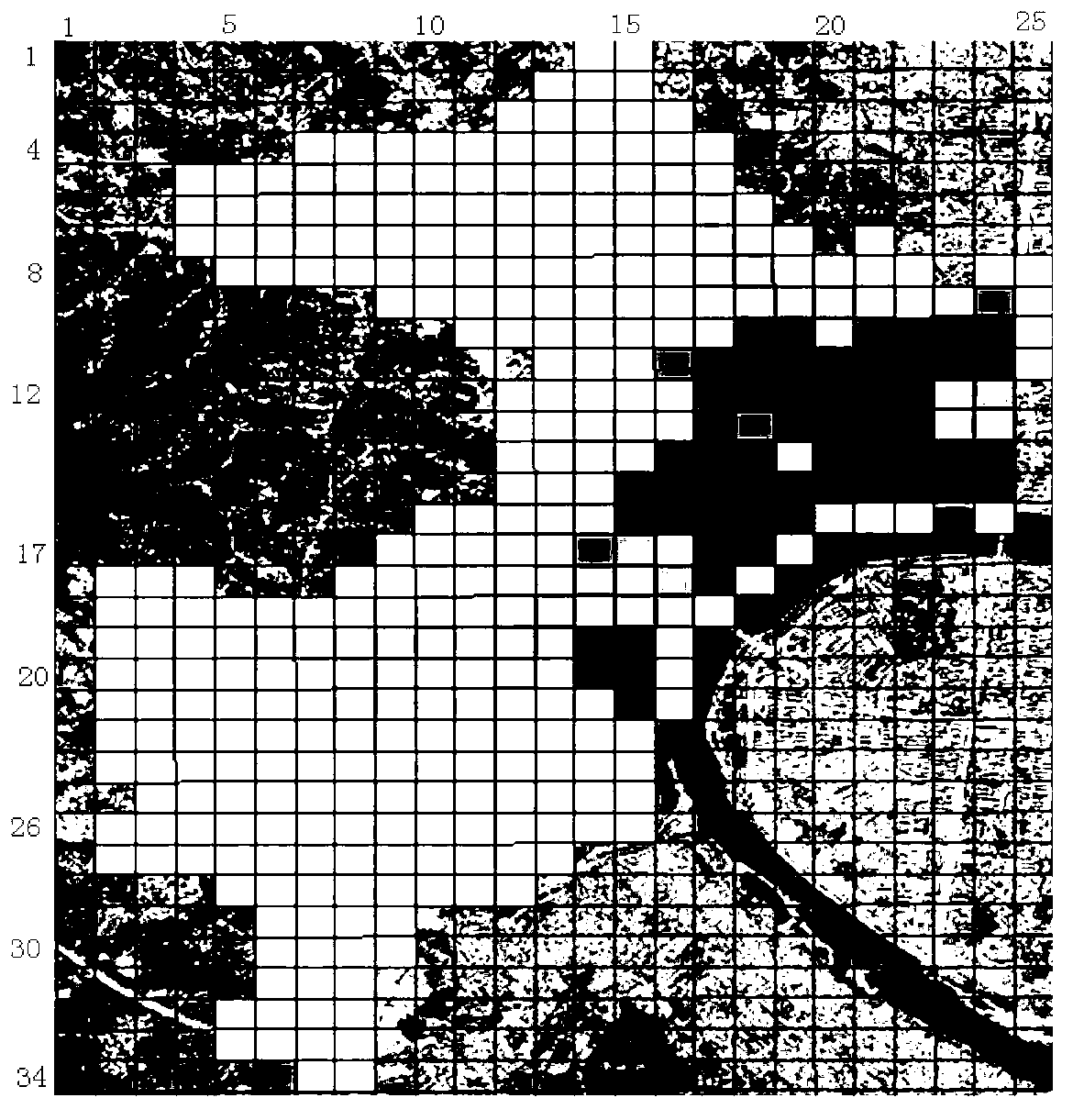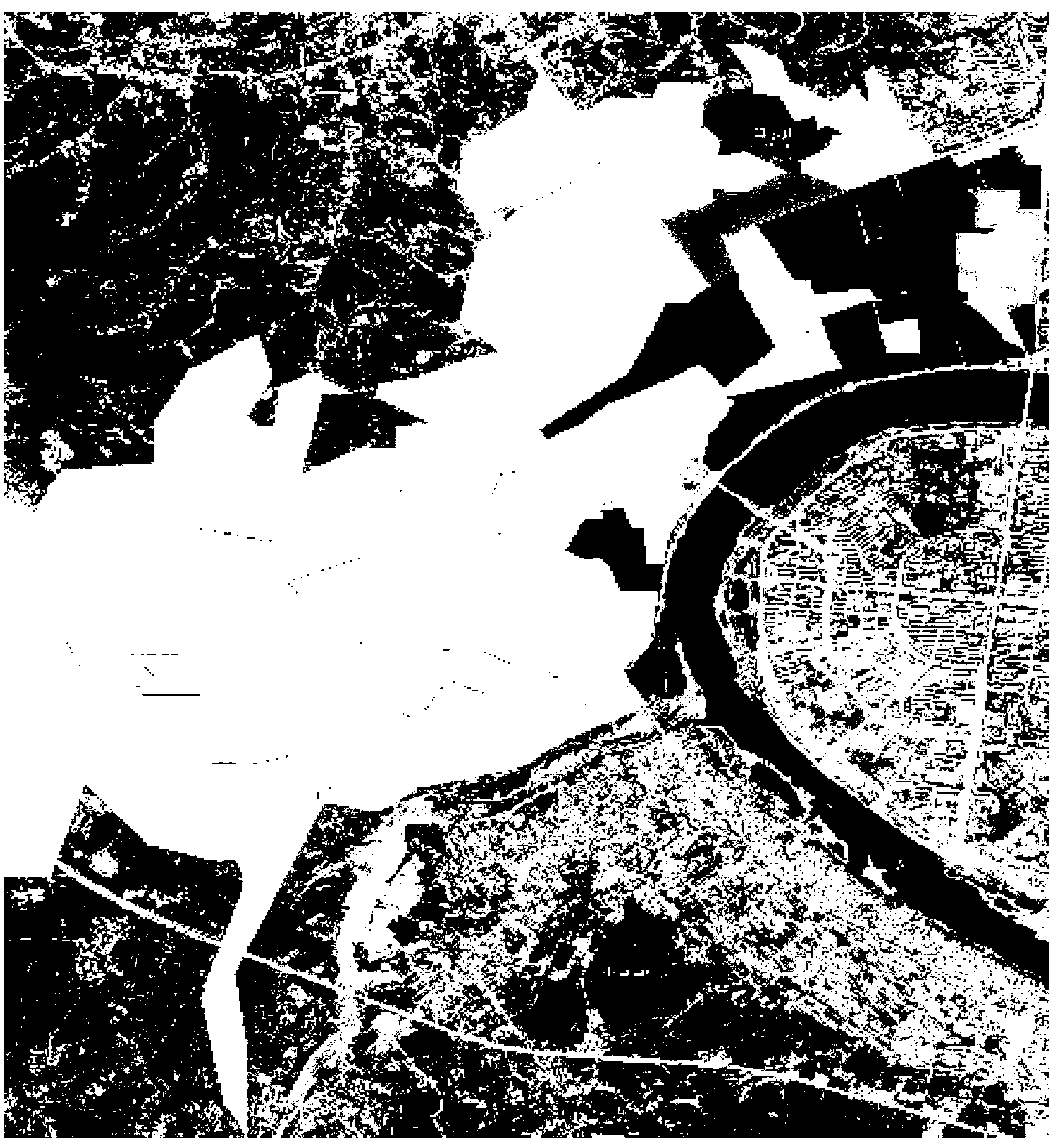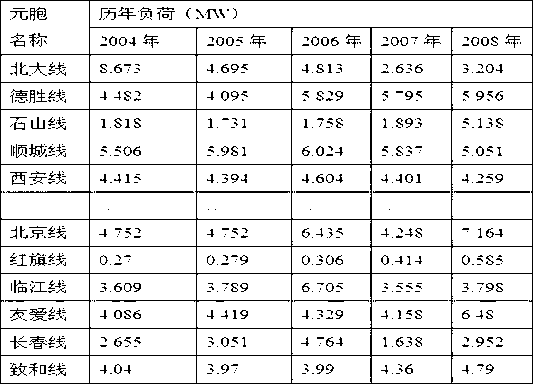Method for obtaining load density index based on cellular historical data
A technology of load density and historical data, applied in data processing applications, instruments, forecasting, etc., can solve problems such as large differences, strong sample dependence, and insufficient regular mining of historical load data.
- Summary
- Abstract
- Description
- Claims
- Application Information
AI Technical Summary
Problems solved by technology
Method used
Image
Examples
Embodiment Construction
[0059] figure 1 and figure 2 Comparison: The predicted results of Chuanying District in Jilin City in 2009 are basically consistent with the load density distribution within the 10kV power supply range of the actual urban power grid, and the load distribution is more detailed, which can better meet the requirements of urban power grid planning.
[0060] refer to figure 1 and figure 2 , a method for obtaining a load density index based on cell historical load data of the present invention, comprising the following steps:
[0061] (1) Generate cells, with the power supply range of 10kV feeder as Class cell, which contains measured data; the power supply area is formed by dividing the power supply area with a square grid of equal size class of cells where the loads are to be predicted.
[0062] (2) Establish the power geographic information system GIS, the English full name is: Geographic Information System,
[0063] build contains The layer of cell-like information a...
PUM
 Login to View More
Login to View More Abstract
Description
Claims
Application Information
 Login to View More
Login to View More - R&D
- Intellectual Property
- Life Sciences
- Materials
- Tech Scout
- Unparalleled Data Quality
- Higher Quality Content
- 60% Fewer Hallucinations
Browse by: Latest US Patents, China's latest patents, Technical Efficacy Thesaurus, Application Domain, Technology Topic, Popular Technical Reports.
© 2025 PatSnap. All rights reserved.Legal|Privacy policy|Modern Slavery Act Transparency Statement|Sitemap|About US| Contact US: help@patsnap.com



